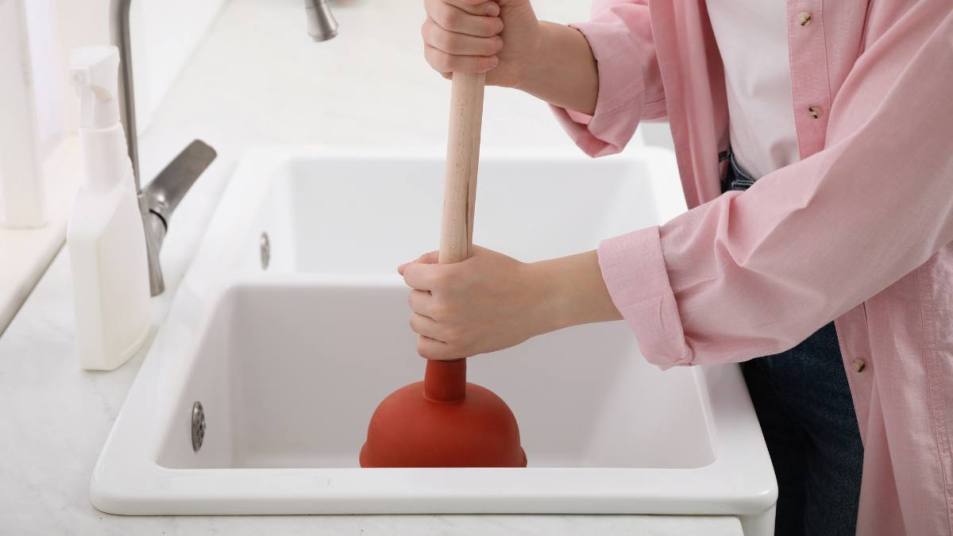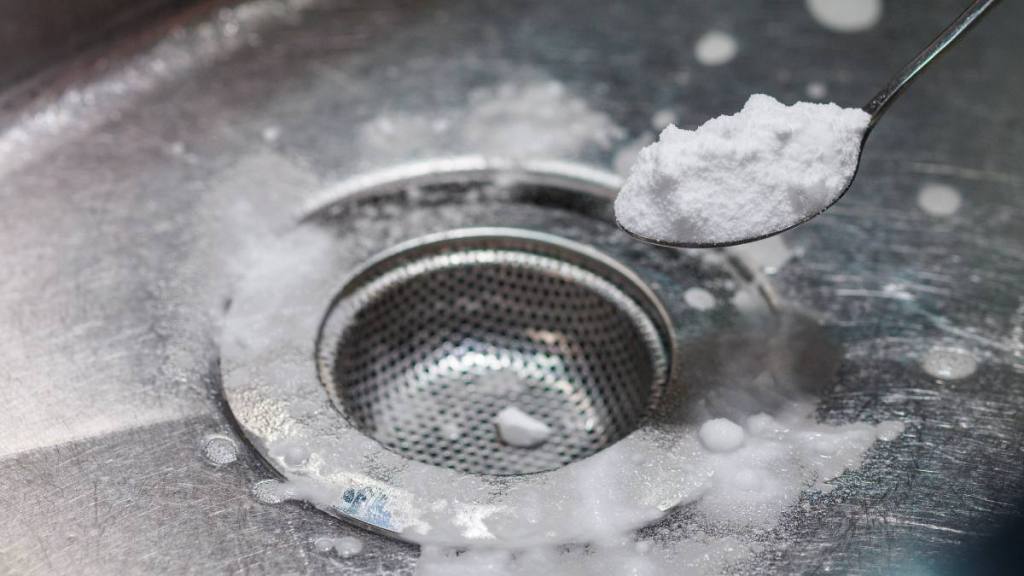Plumbers’ Tips for How to Unclog a Kitchen Sink Fast + The Drain Cleaner You Should Never Use
Expert solutions to clogs that are both big and small

Nothing can shut down a functioning household faster than a stopped-up kitchen sink — and it always seems to happen right when company is about to come over. To the rescue: these expert-backed tips that teach you how to unclog kitchen sink blockages so you can quickly and easily get things flowing again.
The top causes of kitchen clogs
Here is a random fact for you: all kitchen sink drains are 3½ inches, which is almost twice as large as the average bathroom sink drain. The reason being, the folks who got together and decided on the universal size for kitchen sink drains knew they needed to be a bit wider to accommodate for all the gunk we were going to wind up throwing down them. Yet, despite the intentionally larger size, those drains still plug up now and then.
“That’s because, over time, grease, fat and soap scum will collect around the inside of the pipes leading from your sink,” explains plumbing technician Josh Mitchell, owner of Plumbinglab.com. “Food scraps, dirt and other debris can get caught in that gunk, which will eventually lead to a clog and potentially more significant plumbing issues if not properly addressed.”
If you find yourself with a drain not doing its job properly, don’t fret — or call your plumber right away. There are a few at-home methods you can try, which will clear up most minor clogs and slow-downs.
How to unclog a kitchen sink if it’s draining slowly
Give these a try if your sink is draining slowly but not fully stopped up.
Baking soda & vinegar

This time-tested method has a proven track record for dislodging minor sink clogs and is safe to use for all types of pipes — cast iron, PVC, PEX, copper, etc. — as well as homes with septic systems.
“Start by pouring half a cup of baking soda down the drain, followed by half a cup of white vinegar,” says Mitchell. “The combination will create a fizzy reaction that helps to dislodge the clog and break it apart. Cover the drain opening to contain the reaction, and let it sit for about 15 minutes to allow the solution to work its magic. Afterward, flush the drain with a few quarts of hot water to wash away the loosened debris and fully clear the pipe.”
Dish soap
Another proven, eco-friendly method that’s safe for all pipe types and septic systems, dish soap can be particularly powerful at breaking down grease-based clogs.
“Simply pour about a half cup of dish soap — I prefer Dawn — right into the drain, undiluted,” says Debra Held, national director of plumbing services for Drain Genie. “Let it sit for at least 15 minutes so it can go to work breaking down the grease that’s built up along your pipes. Once done, turn on the hot sink tap and let the water run for about 10 minutes to fully flush out the pipes.”
Can I use Drano?
The general consensus for store-bought chemical-based drain cleaners is that they can work. But they might cost you in the long run.
“While they can be effective at removing kitchen clogs, I don’t recommend relying on chemical de-cloggers because they can pose a threat to your plumbing system, corroding metal pipes and even weakening plastic ones,” says Justin Cornforth of Ace Plumbing. “Over time, they do more harm than good.”
Also, if your home has a septic system, it’s advised to never use chemical-based decloggers, as these will also destroy the beneficial bacteria required to keep your septic operating properly.
Luckily, there are septic- and pipe-safe storebought drain de-cloggers, which rely on enzymes rather than harsh chemicals to help clear clogs, including Green Gobbler Liquid Drain Clog Remover or Earthworm Drain Cleaner.
How to unclog a kitchen sink if it’s not draining at all
If the clog in your sink has resulted in water that won’t drain at all, liquid solutions will likely not be enough. In these cases, you can turn to one of the following options.
A sink plunger

Did you know there are different types of plungers? And, it turns out, the ones that are best for toilets are not necessarily the best for sinks.
So how to unclog kitchen sink blockages with a plunger? “First of all, you don’t want to use the same plunger you use for your toilet simply because you can transfer bacteria and germs to your sink that way, which is best avoided for obvious reasons,” says Cornforth. “But even more importantly, it’s inefficient. Toilet plungers have a flange that fits into the toilet bowl outlet, while sink plungers have a wider, flatter bottom suited for surfaces like sink and bathtub drains — they will give you a better seal over the drain, which will create the suction necessary to dislodge whatever is in the pipes.”
For tips on how to best use a sink plunger, check out this video:
A drain snake
“One of the best tools for a clog to use is a drain snake, which can be found at any home improvement or hardware store,” says Cornforth. “However, homeowners should be careful when using it because it can break inside the pipe and cause a bigger problem. It rarely occurs with drain snakes made of PVC, ABS, stainless steel or another type of corrosion-resistant metal, which makes them the best options.”
Using a snake can take a little more know-how and elbow grease than other methods. To learn some best practices, check out this step-by-step video:
How to prevent future sink clogs
Once your sink is draining freely again, you’ll likely be eager to prevent that situation from repeating. And luckily, with some simple best practices, you typically can.
“Number one, never pour grease down your drain. If you’re frying something or cooking meat and a lot of fat drips into the pan, pour it into a safe vessel, like an old coffee can, let it cool and dispose of it in the trash instead,” says Mitchell. “And use a sink strainer to catch food particles — since sink drains are universally sized, you can buy one at any home improvement store and it will fit if you don’t currently have one.”
Additionally, giving your sink a weekly flush with hot water can further prevent buildup
and ensure that any remaining debris is flushed away, adds Mitchell. “Just heat some water on your stove — a few quarts will do it — and pour that down the drain. You can also use the vinegar and baking soda method as a preventive cleaning once a month.”
These simple yet effective preventive measures can go a long way in maintaining the health and functionality of your kitchen plumbing system, saving you time and hassle in the long run.
For more kitchen hacks, click through the links below!
How to Get the Inside of Your Dishwasher Squeaky Clean: Pros’ Tricks Make It Easy!
This Homemade Oven Cleaner Made With Dawn Is the Life-Simplifier You Didn’t Even Know You Needed












